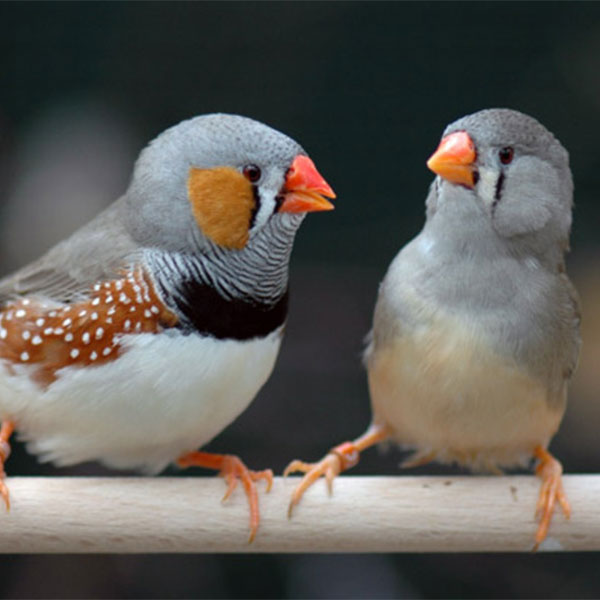Animal Intelligence: Case studies with birds

Current scientific research questions whether intelligence is an exclusive trait in humans. Although our ability to engage in abstract thought distinguishes us from other species, it has been proved that using tools, reasoning and learning are not exclusive in humans.
Several animal species that present advanced levels of intelligence have been analyzed in order to reach this conclusion. Clearly, primates are the most common, but there are other species, like birds, that can shed new light on intelligence.
Markus Tellkamp, professor of the School of Life Sciences and Biotechnology at Yachay Tech, studies birds in archaeological and paleontological contexts. According to Tellkamp, these vertebrae animals have very complex behaviors that, although have no direct relation with mammals, specifically humans, can serve as models for the study of complex processes such as neuroscience.
Birds contribute to the study of different branches of science. They are analyzed more than other mammals in ecology and other behavioral studies. According to Tellkamp, ”In nature, we can say that we have seen or heard a bird species any given day. How many mammals can we say that we saw that same day? Maybe a cow, when you drive down the country, but it’s hard to see that in the wild. It’s easier to study the behavior of a sparrow that you can find anywhere, than the behavior of a mouse, which is hard to track down.”
Also, birds and humans have a common ancestor: a reptile that possibly lived hundreds of millions of years ago from which two lineages split. One of them gave place to mammals and the other gave place to turtles, reptiles, dinosaurs and birds.
According to Carlos Antonio Rodríguez, an Ecuadorian student of the graduate program in Neuroscience and Animal Behavior at Emory University in Atlanta, even though it has been over 300 million years of evolution, there are still cerebral structures that have remained the same in both groups.
“Evolution tends to be very conservative and instead of changing characteristics that are vital for survival, they prevail. It is likely that there are cerebral structures in common that have prevailed because they have a special function in the survival of the species,” says Rodriguez.
In the last 20 years there has been a small revolution in the understanding of birds, and many areas of their brain have turned out to be not as primitive as thought. For instance, birds have a highly advanced nervous system, a developed brain, the ability to recognize themselves in front of a mirror, social development for interaction and the use of tools to reach their objectives.
Vocal learning is one of the traits they share with humans. There are two types of learning: auditory and vocal. Auditory learning is what dogs do; they can bark by instinct but they cannot respond vocally with their name. Vocal learning refers to the need to interact with a member of the same species to vocalize. These two types of learning do not necessarily cancel one another. Birds have the two types of learning while dogs lack vocal learning.
”If you raise a dog without any interaction with another dog, it will most likely bark when it reaches adulthood,” explains Rodriguez. ”When you raise a bird without interacting with other birds, it will not sing as an adult. Just like humans, birds need to observe and listen in order to learn to sign. That’s the difference!”
According to Tellkamp, many birds learn to sing in the nest and they perfect their chirp during the first year by listening to others. Other birds perfect their chirp during the first year but lack the ability in their vocal tract to produce different chirps. Nevertheless, their ability to perfect their chirp is proof that they have learned.
These are some of the scientific theories that they deal with. As a biologist, Markus Tellkamp believes that there are birds with higher learning ability than others. ”The learning ability is not related to complexity or learning itself. It depends on your interests. If you’re interested in the ability to learn chirps, you would study mockingbirds, for instance. If it’s behavior, you would go for crows.”
Tellkamp believes that all species can learn, but they have different abilities. ”There are species that have inherited behaviors, such as chickens, although they don’t inherit all of their behavior. They learn but not at the same level as other species like crows, hawks or falcons, that have great thinking and reasoning skills.”
Rodriguez doesn’t see a clear difference between birds guided by instinct and birds guided by reasoning and learning. ”Birds can learn to find food by watching others do it. A bird learning or not to sing doesn’t say anything about it being good or bad at learning things. Generally speaking, both inherited behaviors and learned behaviors are important for all animals’ species to function properly.”
Every animal contributes to the study of science with its traits. Each research contributes to the analysis of processes in humans without needing to start from scratch to understand it. What’s interesting is that it opens a range of possibilities without forcing us to study only primates. These are analysis that could be translated in the future to help understand humans better.